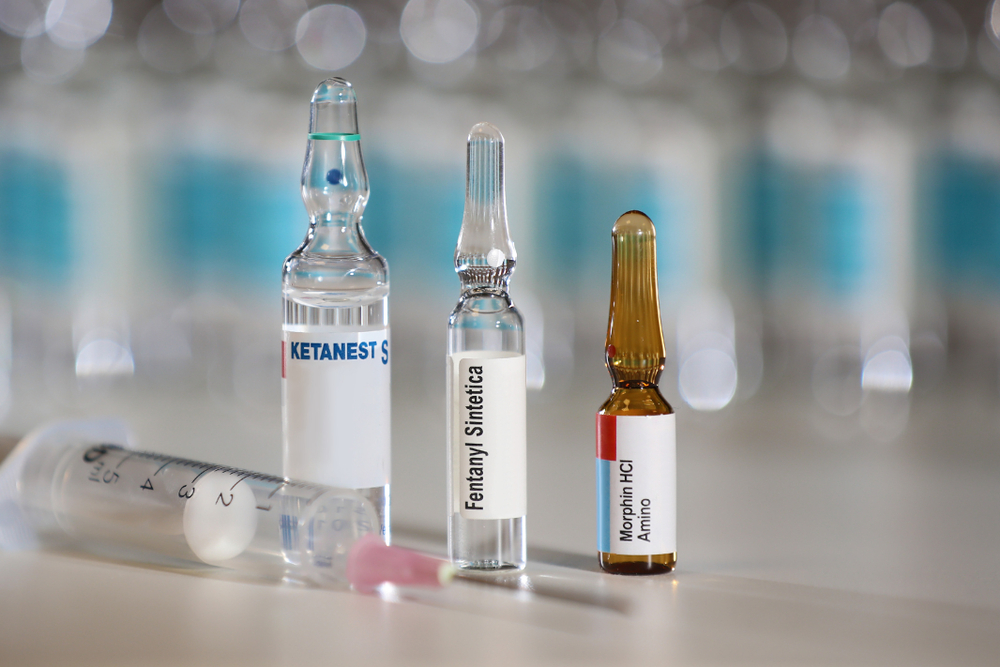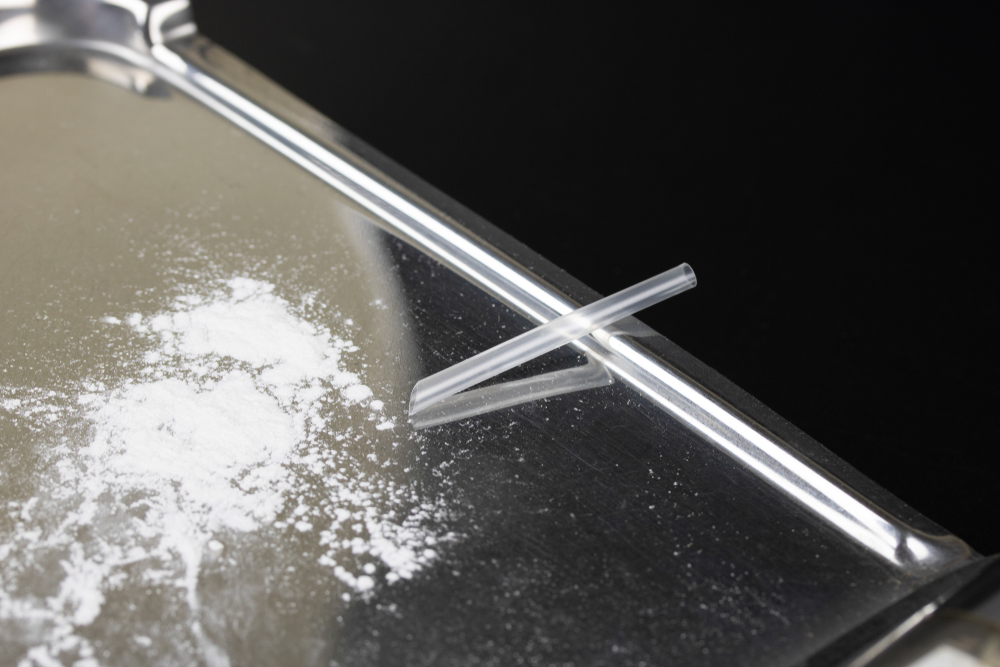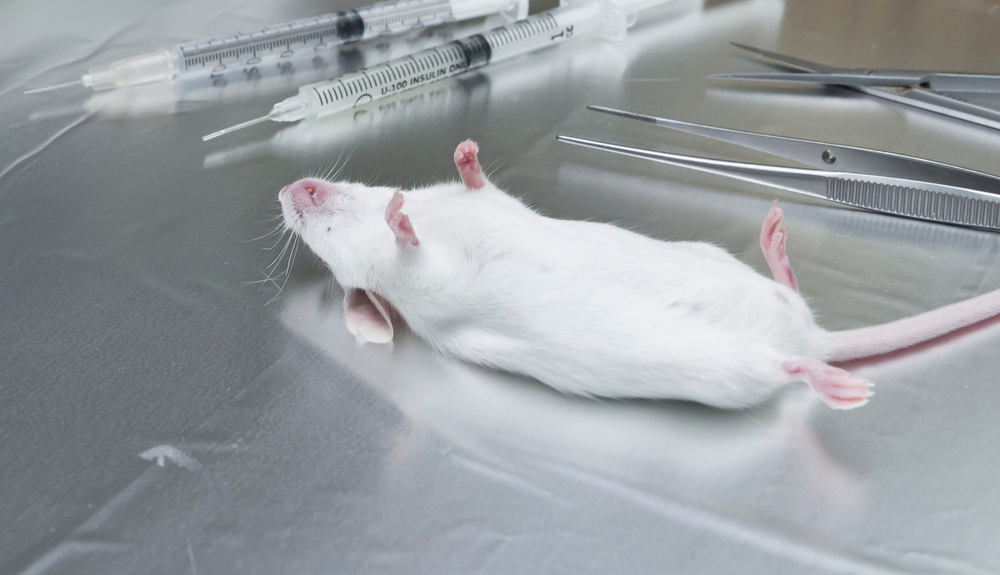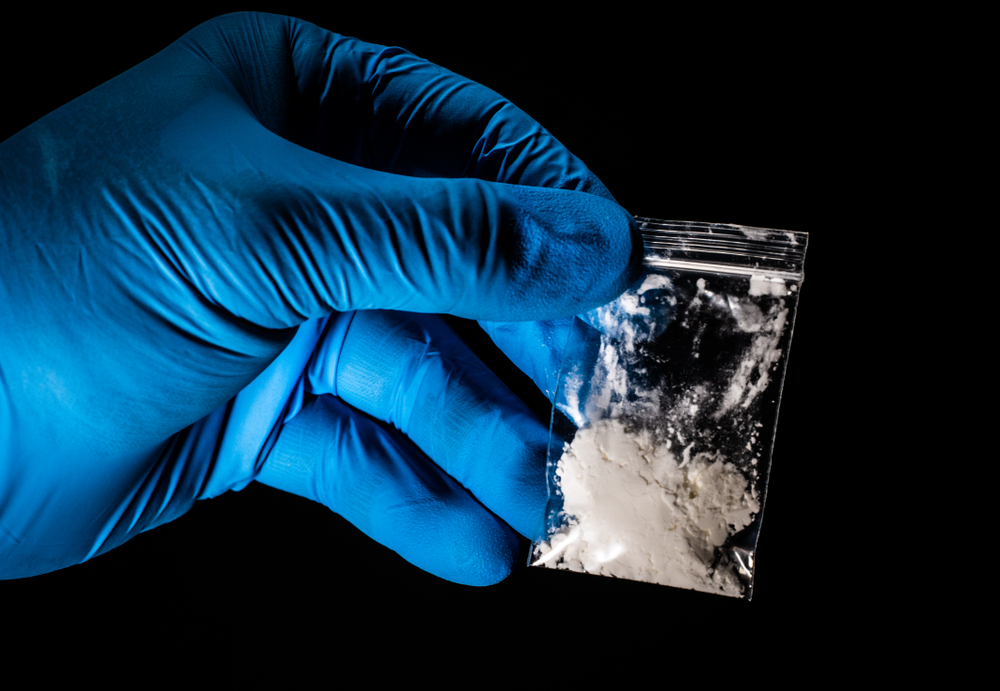Ketamine
Ketamine is a pharmaceutical tranquilizer used as a sedative during surgical procedures.
Many people are taking ketamine as a party drug for its mind-altering effects.
Unfortunately, a lot of people are becoming addicted to the drug, leading to ever-increasing doses and increased risk of overdose.
In this article, we explore what ketamine is, what ketamine addiction looks like, and what treatment options are available for anybody caught in the grasp of this pharmaceutical tranquilizer.

What is Ketamine?
Ketamine was first identified in the 1960s where it was used as an anesthetic during the Vietnam war.
The drug acts as a powerful painkiller in lower doses and helps other analgesics like morphine work more efficiently. Ketamine was often given in conjunction with morphine to provide stronger pain-relief without risking overdose from large doses of morphine or other opiates.
The drug is widely used in veterinary medicine as a tranquilizer for dogs, cats, and even horses. Modern medicine rarely uses ketamine in humans because there are often better and safer drug alternatives that provide the same level of benefit.
In most cases, ketamine is only used in humans along with other sedatives to offset the mind-altering effects —which can lead people to seek out the drug again after the surgery.
Ketamine is a fat-soluble compound that is quickly absorbed into the body. The effects begin almost immediately depending on the method of consumption.
Intravenous injection produces almost instant effects while snorting the drug or ingesting it orally takes around 15 to 45 minutes for the drug to produce any effects.
Common Names For Ketamine
- Special K
- Vitamin K
- Super K
- K
- Green
- Donkey Dust
- Wonk
Is Ketamine Legal?
Currently, the Drug Enforcement Agency (DEA) considers ketamine a schedule III drug and is not classified as a narcotic.
Drug scheduling in the United States classifies a compound by their potential for abuse and the medicinal value they offer.
Schedule III drugs are considered to have low to moderate potential for physical dependence. Other drugs listed in this scheduling include testosterone, Tylenol with Codeine, and anabolic steroids.
It should be noted that while ketamine has few signs of physical dependence, it has a strong potential for behavioral addiction and abuse — which has the same results as physical addiction.

What Are the Effects of Ketamine?
Even in low doses, ketamine changes your perception of the world around you. It can affect the way you interpret sounds and smells — and may cause you to feel out of touch with your own body. This is why many addiction experts classify the drug as a dissociative anesthetic.
The more ketamine you take, the harder it becomes to speak, walk, or communicate effectively. Because of this effect, some people use these effects of the drug maliciously as a date-rape substance.
Most ketamine users describe the experience as “dream-like”. When sleeping on ketamine, dreams become extremely vivid — sometimes producing feelings of intense joy, other times causing realistic night terrors.
Very high doses of the drug (usually administered intravenously) can cause users to enter an out of body state — referred to as a “K-hole”.
What is a K-Hole?
A K-hole is induced by taking large doses of ketamine — causing a loss of consciousness and dream-like hallucinations. Users report the experience feels like an intense feeling of separation from the body.
Some people enjoy the K-hole experience, while others find it terrifying and unsettling — leaving them with lasting trauma from the experience many years later.
Some people remain conscious while in a K-hole, but are unable to move, talk, or ask for help. You’re left sitting or laying on the floor helpless and unable to control your body.
The K-hole experience can last anywhere from 30 minutes to an hour and a half. In some cases, the experience persists for several hours or days before gradually subsiding.

Is Ketamine Dangerous?
Ketamine affects everybody differently. Some people use high doses of ketamine for a year or longer before experiencing serious health consequences, others need to be hospitalized on the first, second, or third trip with the drug.
The most dangerous side effect of ketamine is self-inflicted bodily harm. The drug can cause severe paranoia, psychosis, and panic. This has been known to prompt users to jump out in front of cars, wander into sketchy areas on their own, or attack strangers they believe to be out to get them due to their complete disconnection from reality.
The pain-inhibiting effects can cause people to suffer severe injuries to the body without even knowing it. As they continue to move around in a clumsy, disorientated fashion, they may accidentally break bones or receive deep lacerations to the skin — potentially leading to life-threatening injuries.
Ketamine can also cause heart rate and blood pressure to increase to dangerous levels — increasing the risk of suffering a heart attack or stroke.
Long-term use of ketamine can cause serious kidney, liver, and bladder damage. This can lead to jaundice (yellowing skin), bloody urine, incontinence (inability to control urine flow), or severe abdominal and lower back pain.
The cramping and pain associated with ketamine use is so common it even has its own name — K cramps.
Potential Dangers of Ketamine
- Lost touch with reality — resulting in increased risk behavior
- Rapid heart rate (Tachycardia)
- High blood pressure (Hypertension)
- Kidney damage
- Liver damage
- Bladder damage
- Incontinence
- Severe abdominal pain and cramping (K cramps)
- Psychotic episodes
- Memory loss
- Depression and anxiety
- Panic attacks
There’s another danger from ketamine that’s becoming increasingly common within the United States — overdoses from adulterants in the ketamine such as fentanyl.
A lot of black market drug manufacturers are now adding fentanyl or kar-fentanyl to ketamine tablets in order to increase the addictive potential of the drug — and therefore more profits from returning customers.
Fentanyl is widely considered to be one of the most addictive, and deadly drugs in America — linked to tens of thousands of overdose deaths every year.

Can Ketamine Cause Overdose?
A K-hole is widely considered a ketamine overdose. It causes areas of the brain to become dysfunctional and increases the risk of suffering a heart attack, stroke, respiratory arrest, or suffocation from your own vomit while unconscious.
With that said, deaths from ketamine use alone is rare. Most cases of ketamine overdose deaths are caused by cutting agents like fentanyl in ketamine powders or the combined effects of ketamine, alcohol, and other drugs or medications.
Signs of Ketamine Overdose
- Vomiting
- Irregular or rapid heartbeat
- High blood pressure
- Chest pain
- Severe abdominal cramping
- Hallucinations
- Slow breathing
- Loss of consciousness
- Eyes rolling back into the head
Harm Reduction: Tips on Using Ketamine Safely
While it’s impossible to use ketamine completely risk-free, there are some important tips you should follow to minimize your risk of danger as much as possible.
1. Know What You’re Taking
It’s wise to use testing kits to check your ketamine for dangerous substances before you use it. It’s common to see adulterants in street-level ketamine, such as fentanyl or other opiates.
2. Never Mix Ketamine With Other Drugs or Alcohol
Most overdose deaths are the result of ketamine in combination with other analgesics or sedatives. Mixing compounds can result in unpredictable effects, and may cause irreversible psychological or physical damage.
3. Avoid Eating Directly Before Using Ketamine
If you end up losing consciousness while under the influence of ketamine it can cause you to vomit. If you just ate a meal and become unconscious from the ketamine, you may end up suffocating from the vomit. This is more common than you might expect.
4. Start With a Low Dose and Listen to Your Body
Ketamine affects everybody differently, so always start with a small dose to see how it affects you individually. Just because your friends use higher doses of the drug doesn’t mean you need to as well.
5. Never Take it Alone
Ketamine is dangerous to use alone. The effects aren’t long-lasting, but the change can be dramatic. If you lose consciousness and begin to choke on your own vomit or fall into the grasp of an opportunistic predator, it’s important that you have someone you trust nearby to offer help when you need it most.
6. Find a Safe Space
As a dissociative, ketamine can cause severe psychological trauma if you’re not in a place you feel safe. Additionally, losing consciousness in a dangerous location, like an alleyway or bar can open you up to all kinds of risks from both the environment and the people around you.

What’s The Dose of Ketamine?
The dose of ketamine isn’t very big. A single capsule may be enough to cause users to lose control of their body or experience a K-hole event.
Injection of the drug requires even smaller doses. The difference between a recreational high and a K-hole is marginal when using ketamine intravenously.
Common Recreational Doses of Ketamine
| Dosage | Method of Administration |
| 200 – 300 mg | Orally (Mouth) |
| 60 – 250 mg | Insufflation (intranasal or “snorting”) |
| 50 – 100 mg | Intravenously (IV) |
How Does Ketamine Work?
Ketamine works in a similar way to PCP (phencyclidine) — a powerful hallucinogenic and dissociative drug known to cause psychotic breaks. Ketamine is estimated to be roughly 10% as potent as PCP.
Both drugs work by blocking NMDA (N-methyl-D-aspartate) receptors in the brain. This effect interferes with glutamate — a key neurotransmitter in the brain associated with learning, memory, cognitive thought processes, pain transmission, emotion, and much more.
In higher doses, ketamine has opiate-like activity by binding to the mu-opioid receptors in the spinal cord and brainstem.
How to Tell if Someone is Using Ketamine
If you suspect someone you know and love to be using ketamine, there are a few key signs to watch out for:
- Bloodshot eyes
- Changes in behavior (paranoia, sudden mood swings, hallucinations)
- Frequent complaints of cramping
- Slurred speech
- Amnesia (forgetfulness)
- Sudden reduction in attention span
- Possession of needles, white powder, or medical vials
- Blood in the urine
- Digestive disturbances
- Ulcers in the stomach or intestines
- Worsening depression
- Contracting infectious diseases (such as HIV or hepatitis from shared needles)
- Kidney disease
- Cold or flu symptoms lasting several weeks or months (nasal drip)
- Frequent nightmares
- Bedwetting (incontinence)

Ketamine Addiction: Signs, Symptoms, & Treatment
Ketamine is considered to have a low chance of causing physical addiction.
But don’t be fooled — ketamine remains highly psychologically addictive. Users will begin to take the drug compulsively, driven by the dissociative effects of the drug rather than the consequence of physical withdrawal symptoms.
Habitual use of the drug can cause tolerance formation — prompting users to require larger doses of the drug to experience the same degree of effects. It can become just as hard to stop using the drug as other substances like Xanax, Crack, or Heroin.
A lot of ketamine addicts go unrecognized because of the lack of physical symptoms — making it hard to treat, especially in people who can’t see for themselves that they’re having a problem with the drug.
What Are the Signs of Ketamine Addiction?
- You need a higher dose to get the same effect level as before
- You rely on the drug to feel “normal”
- You can’t stop taking the drug even though it’s leaving a negative impact on your life
- You experience regular cravings for the drug when you’re not taking it
Does Ketamine Cause Withdrawal?
There are very few physical withdrawal symptoms of ketamine. Most of the symptoms experienced by people who stop taking the drug after using it for long periods of time are psychological in nature. It causes you to crave the drug and make you feel as though you need it to feel normal.
Normal patterns in your day may cause you to crave the drug and consider using it even though you know it has a negative impact on your life.
The drive to continue taking the drug comes out of habit and psychological desire to experience its effects over and over again.
This is in contrast to other addictive drugs, like cocaine, alcohol, opiates, or benzodiazepines — all of which cause severe physical withdrawal symptoms whenever the drug wears off.
There are some physical side effects of ketamine withdrawal — such as nasal drips, irritability, mood swings, ringing in the ears, nausea, fatigue, and a general feeling of being unwell.
A lot of ketamine users say they feel as though they’re suffering from a cold or flu for several weeks after stopping the drug.

Treating Ketamine Addiction: What Are Your Options?
Step 1: Identify & Accept That You’re Addicted to Ketamine
The first step of ketamine addiction treatment is recognizing there’s a problem. It can take ketamine users a long time to recognize they’re abusing the drug because of the limited withdrawal effects.
It’s not uncommon for regular ketamine users to start out taking the drug every now and then — which can gradually develop into use only on weekends or a few times per week.
In a lot of cases, people who don’t use the drug every day don’t see their drug use as an issue — even if they continue to use the drug multiple times per week.
The lack of side effects makes users feel as though they could stop the drug at any time, — but they simply “don’t want to yet”.
This is a common characteristic of behavioral addiction, and likely to be the biggest hurdle in finding an effective treatment for people addicted to the drug.
If you or someone you love knows they’re addicted to ketamine and wants help, there are a few excellent options you can follow to initiate treatment.
Step 2: Visit your Primary Health Practitioner
The next step is to visit your primary health care provider or visit a rehab center directly.
Your doctor can guide you in the right direction about where to go to get help for your addiction. If the addiction isn’t too severe your doctor may be able to give you alternative medications to help you wean off the ketamine yourself. These may include pain killers or anxiety medications if the main reason for using the drug is to treat underlying health issues like anxiety or depression.
An addiction psychologist is also an invaluable resource to help curb your cravings for the drug. Your doctor can refer you to a psychologist during your visit.
For more severe addictions, such as poly addiction (addiction to multiple substances) may require a higher level of care. Your doctor may recommend you check-in to a rehab center in these cases to oversee the detox process and help you manage triggers causing you to use the drug.
Step 3: Long-Term Support Options
Addiction can’t be cured overnight. It can take several months or years to be completely free from cravings or temptations to use the drug.
For this reason, it’s important you manage your addiction triggers long term. This involves limiting your exposure to friends or family members you would normally use drugs with — especially if they still use the drug or have a high risk of relapsing.
Limiting exposure to triggers may also involve changing your daily routines. It can mean no more nights out partying or placing yourself in environments where you’re more likely to use the drugs again.
A lot of ex-ketamine addicts find adopting a new hobby can go a long way in eliminating their need to use the drug. It can give you a sense of purpose and direction in life that you may not have had while using ketamine.
For a lot of people, ketamine serves as an escape from a reality they don’t enjoy. So a vital aspect of staying sober long-term is to find activities to do that make life more enjoyable.

Summary: Ketamine, Abuse, Addiction, & Overdose
Ketamine is often used as a party drug for its dissociative effects. It can change your perspective and alter the way you experience sounds, sights, and feelings. This makes it popular in the rave scene where there are flashy lights and up-beat sounds.
Over time, frequent ketamine use can lead to the formation of tolerance and behavioral addiction. You may find yourself craving the drug, or tempted to use it despite the clear negative impact the drug has on your life.
As the abuse becomes more severe, some users will begin injecting it or taking large doses to experience what’s referred to as a k-hole — a powerful dissociative state where you can lose touch with reality.
Ketamine has very few physical side effects of addiction, and rarely causes death by overdose on its own. Most overdose deaths are the result of mixing ketamine with other drugs or consuming street-level ketamine tainted with other deadly drugs.
Treatment for ketamine addiction relies on first identifying there’s a problem before reaching out to your primary health care provider or calling a rehab center directly.
With professional help, and the desire to become clean, ketamine addiction is very treatable, and most ex-ketamine users can go on to live a normal, healthy, and happy life once they’ve kicked the drug to the curb.
References
- Zorumski, C. F., Izumi, Y., & Mennerick, S. (2016). Ketamine: NMDA receptors and beyond. Journal of Neuroscience, 36(44), 11158-11164.
- Yeung, L. Y., Rudd, J. A., Lam, W. P., Mak, Y. T., & Yew, D. T. (2009). Mice are prone to kidney pathology after prolonged ketamine addiction. Toxicology letters, 191(2-3), 275-278.
- Bonnet, U. (2015). Long-term ketamine self-injections in major depressive disorder: focus on tolerance in ketamine’s antidepressant response and the development of ketamine addiction. Journal of psychoactive drugs, 47(4), 276-285.
- Ding, R., Li, Y., Du, A., Yu, H., He, B., Shen, R., … & Lu, Y. (2016). Changes in hippocampal AMPA receptors and cognitive impairments in chronic ketamine addiction models: another understanding of ketamine CNS toxicity. Scientific reports, 6, 38771.
- Chu, P. S. K., Ma, W. K., Wong, S. C. W., Chu, R. W. H., Cheng, C. H., Wong, S., … & Man, C. W. (2008). The destruction of the lower urinary tract by ketamine abuse: a new syndrome?. BJU international, 102(11), 1616-1622.
- Dotson, J. W., Ackerman, D. L., & West, L. J. (1995). Ketamine abuse. Journal of Drug Issues, 25(4), 751-757.